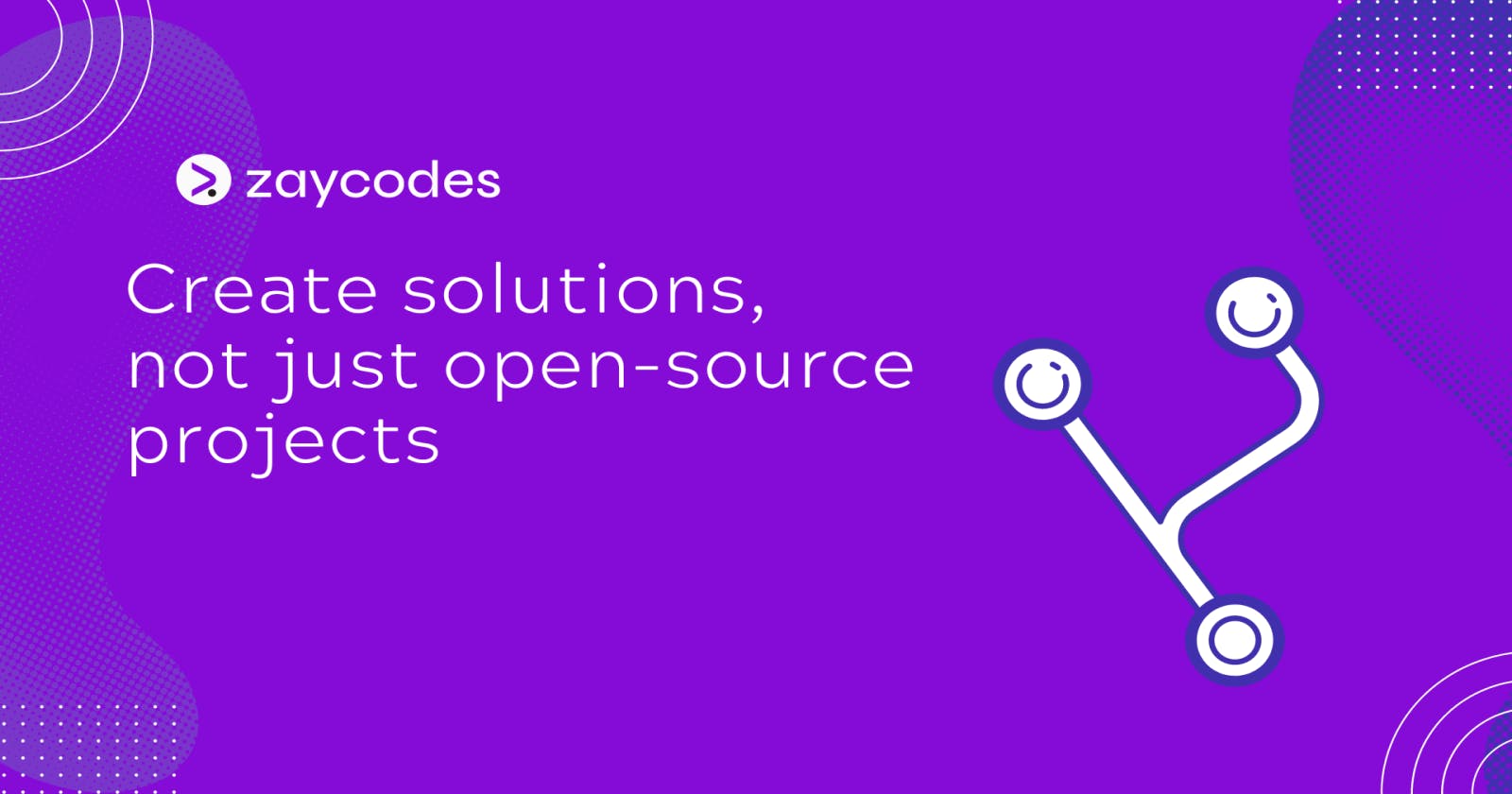Introduction
Are you looking to get involved in open-source and make an impact with your work?
Here's a great way to start: focus on creating solutions, not just open-source projects. By taking this approach, you'll be able to hone your skills while also making meaningful contributions that can help others.
In this article, I will share the importance of creating open-source solutions and how to create them.
Open-source projects provide an opportunity for open-source enthusiasts and organisations to work together on solving difficult challenges in ways that are both cost-effective and innovative.
Open-source projects allow open-source enthusiasts to collaborate and contribute to a common codebase, leading to faster innovation and development. However, simply creating an open-source project is not enough. As techies, it is our responsibility to not only create new projects but also to create solutions that address real-world problems.
What does it mean to create an open-source solution?
Creating an open-source solution means considering the impact of the project on the community. By creating an open-source solution, one identifies and addresses a problem, challenge, or need, and then develops a product, service, or technology that addresses that problem effectively. The goal of creating a solution is to provide a tangible outcome that meets the needs of its target audience and solves a real-world issue.
These are the questions that techies or open-source enthusiasts should be asking themselves when creating open-source projects; will it make the lives of the users easier? will it save users’ time? will it increase the users’ productivity?
Why is it important to create open-source solutions?
While open-source projects are great for sharing knowledge and building communities, they sometimes lack a clear focus on solving a specific problem. As a result, some open-source projects fail to impact the world significantly.
When creating an open-source solution, it is important to consider the problem that the project is trying to solve. It is easy to get caught up in the excitement of creating something new and innovative. It is important to create open-source solutions because they play a critical role in driving progress and solving real-world problems.
For example, creating a new text editor is not as valuable as creating one that addresses the specific needs of a particular community, such as visually impaired users.
How do you create these solutions?
Creating tech solutions requires creativity, technical expertise, and a deep understanding of the problem being addressed.
Here are some steps you can follow to create effective solutions in technology:
Define the problem: Start by defining the problem you want to solve. This may involve research, talking to people directly impacted, and looking for patterns and trends. A product will be more likely to be used if the need is urgent for a solution.
Ideate and brainstorm: Brainstorm ideas and possible solutions to the problem. Encourage creativity, and don’t be afraid to think outside the box. Consider the feasibility and impact of each possible solution.
Validate the solution: Once you have a potential solution, validate it by talking to potential users and gathering feedback. This will help you ensure that your solution meets the needs of your target audience.
Build a prototype: Build a prototype of your solution to test its feasibility and gather more user feedback. This will help you refine and improve your solution.
Gather a team: Gather a team of people with different skills and expertise to help bring your solution to life. Encourage collaboration and open communication to ensure everyone works towards a common goal.
Launch your solution: Make it available to users and get their feedback. This involves iterating on the product or service, making improvements, and addressing any issues that may arise. The key is to stay focused on the problem you are trying to solve and ensure that your solution meets your target audience's needs. Remember to make your solution open-source.
Update: Monitor your solution and stay up-to-date on the latest advancements and technology trends to ensure your solution stays relevant and effective.
Takeaways
Your ability to combine technical skills with critical analysis skills gives you a competitive edge when collaborating in the open-source space. This allows you to contribute meaningfully, leading to successful outcomes rather than just another project.
Open-source enthusiasts should focus on;
Understanding the problem
The impact on the community/ users
The ability to collaborate and integrate with other open-source projects.
This way, our open-source projects will have a greater impact and be more valuable to the community/ users.
Let me know the open-source projects you are building via DM on Twitter or leave a comment here.

